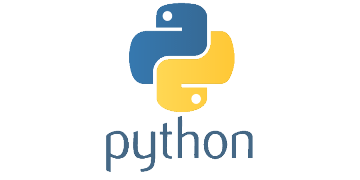Often when senior technology executives come to work with Victory, they are burned out in a big way. I’ve heard this feeling referred to as “corporate PTSD,” conveying the seriousness of the impact some top-level executive jobs are having on high-performing individuals and their general wellbeing — and it’s important to understand why.
Valuable executives are being frustrated and worn down by roles mired in politics and stale models for compensation. It’s so common that we’ve formalized a decompression course for executives we onboard at Victory, the company John Cunningham and I most recently founded in Austin.
The question is: why are smart, high-performing individuals having such a negative experience at the upper echelons of American business? It seems clear to me that traditional business models and traditional organizational structures are simply failing to empower high performers, and in many cases are making their jobs far more frustrating than they have to be.
From the first day, Victory set out to try a new approach to defining true internal organization alignment, and build a more tenable framework for business leadership.
Re-Imagining The Relationship Between Talent and Business
What if we removed obstacles so that top talent could be empowered to do what they do best, and reward them well for doing it? Seems pretty straightforward, right? Here’s another crazy idea: What if alignment could be ensured by hard numbers, instead of by subjective assessments skewed by corporate politics? These are the questions that pressed me to try something new with my latest business.
Ultimately, I found that re-imagining how teams and leaders engage with the businesses was key to addressing these challenges.
At Victory, we break our leaders into four classes, not unlike a university system: Freshman, Sophomore, Junior, and Senior. As leaders advance toward Senior, their pay rate increases but their billable expectations lessen, so they can focus on business development, closing sales, team management, and mentorship.
Pay is also structured thoughtfully, since it is an important motivating factor for most people. Leaders get a base salary, plus billable hours that are weighted so as to not only incent working on expensive clients, plus a commission. Aligning individual pay to what’s actually best for the broader business and its clients ensures that everyone is truly working toward the same goal.
The Victory model isn’t something that can only work for one company or in one area of the business. For example, we first applied the Victory model in the CTO space, but have since expanded our offerings to include multiple practices, including CMOs, CIOs, etc. Each type of leader may have a completely different focus, but each benefits from the Victory model as they are able to tap the specialized skills from other practices to attract larger, more diverse clients.
Compensation reinforces this cross-functional approach: executives get paid no matter what they’re working on, so they aren’t only incentivized to work within their specific practice or silo.
By the team, for the team
In many ways, I view entrepreneurship similarly to nation building. Forming a healthy, productive group at a large scale is no easy task. The organizational structure, the people chosen to lead, and mechanisms for accountability and prosperity are all critical considerations in either case. So if entrepreneurs are essentially nation-builders, why can’t we take a cue from America’s founding fathers and build something by the people, for the people.
When you do, great things can happen — I can attest to the benefits of freeing smart people from outdated structures. At Victory, once executives have time to recover from their experiences at traditional enterprises, they thrive in the hypernetics model, where they are no longer encumbered with countless hours of corporate drudgery and can concentrate on their actual work. Really, this shouldn’t be that radical an idea.
It also shouldn’t be too radical to allow people to put in the amount of hours that they feel comfortable with, and pay them accordingly, instead of forcing people to pretend to show up to meet an arbitrary number of working hours per day.
Perhaps what is radical is the mindset required to walk away from how things have been done in the past, and embrace not just new digital tools, but the processes and models they can unlock. Technology is changing the rules for business by helping us reimagine what’s possible for tomorrow.
We can harness the promise of technology to build a better future of work, both for businesses and the people who work there, building reasonable companies by reasonable people. Let’s leave the inefficiencies of corporate politics and bloated organizational structures in the past.




